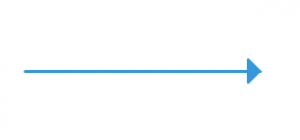Process mapping is like creating a blueprint for how things get done in a business. It’s a way of breaking down tasks step by step, so you can see what’s happening, spot any slowdowns, and make everything flow more smoothly. Whether you’re looking to improve efficiency, manage tasks better, or keep your team on the same page, process mapping is a practical tool to achieve these goals. In this guide, we’ll walk you through what process mapping is, why it’s important, and how to create effective maps that make your processes clearer, simpler, and more productive.
What Is a Process Map?
A process map is a visual tool that lays out each step in a work activity, showing who is responsible at each stage. Think of it as a diagram that helps people understand the flow of a task or project from start to finish. Process maps are often used in process improvement projects, like Lean Six Sigma or business process reengineering, because they make it easy to spot areas where things slow down or become inefficient. By clearly showing each step and its connections, process maps allow teams to identify problems and make changes that improve how work gets done.
Creating a process map is straightforward—you simply draw a box for each step and connect the boxes with arrows to show the order and flow. You can create process maps by hand, but using an online tool makes it faster and easier, especially for more complex processes. A basic process map includes steps like “Start,” “Review,” and “Complete,” with arrows showing the sequence from one step to the next. This simple structure gives everyone a clear view of what happens at each stage, who is involved, and how each part fits into the bigger picture.
You can use an online process mapping tool to easily create a process map. A basic process map would look like this;

Process Map Symbols
Each step in a process is represented by a shape in a process map. These shapes are also called flowchart shapes.
There are nearly 30 standard shapes that you can use in process mapping. However, we think for most people, using a handful of the most common shapes will be easier to understand.
You can find the full set of process mapping symbols in our guide to process mapping symbols.
| Symbol | Name | Use |
|---|---|---|
 | Activity/Process | To represent a step/ activity of a process |
 | Decision | To represent a decision that has to be made |
 | Start/End | To represent the start and end of a process |
 | Arrow | To represent the connection between two steps and the direction of flow |
 | Document | To represent data or information that can be read by people |
In addition to the basic symbols we discussed earlier, process mapping makes use of the following symbols as well.
Process/ Operations Symbols
| Symbol | Name | Use |
|---|---|---|
 | Predefined Process / Subroutine | To represent a process that is already pre-defined |
 | Alternate Process | To represent a process step that is an alternative to the normal process step |
 | Delay | To represent a delay or a pause before the process flow continues |
 | Manual Loop | To represent automated steps that need to be stopped manually |
 | Preparation | To represent something that needs to be modified or adjusted in the process before continuing |
Branching and Control of Flow Symbols
| Symbol | Name | Use |
|---|---|---|
 | On-Page Connector | To represent an inspection point in the process flow |
 | Of-Page Connector | To represent cross-references and links to the process from another process on another page |
 | Merge | To represent a step that will merge several steps into one |
 | Extract | To represent a process that is divided into parallel paths |
 | Or | To represent the ‘or’ logic |
 | And | To represent the ‘and’ logic |
Input and Output Symbols
| Symbol | Name | Use |
|---|---|---|
 | Data | To represent inputs to and outputs from the process |
 | Multiple Document | To represent multiple documents |
 | Display | To represent data that is displayed to be read on a screen or display |
 | Manual Input | To represent process steps that will be manually performed by a person |
File and Information Storage Symbols
| Symbol | Name | Use |
|---|---|---|
 | Stored Data | To represent stored data |
 | Database | To represent a database |
 | Direct Access Storage | To represent a hard drive |
 | Internal Storage | To represent an internal storage device |
Data Processing Symbols
| Symbol | Name | Use |
|---|---|---|
 | Collate | To represent a step in which data is organized in a standard way |
 | Sort | To represent the sorting of items in a particular order |
How to Create a Process Map
Now that you know the basics of process mapping symbols and types of process maps, it’s time to dive into creating one! Here’s a step-by-step guide to help you map out any process clearly and effectively.

Step 1: Identify the Process You Need to Map
First, choose the process you want to map. Think about what you’re trying to achieve. Are you mapping a process that’s not performing as well as it should? Maybe it’s a process that’s essential to a new strategy you’re rolling out, or one that affects customer satisfaction. Pick the process that aligns best with your goals, and give it a clear, descriptive name to keep everyone on the same page.
Step 2: Bring Together the Right Team
Creating an accurate process map requires input from the people who know the process best. Gather a team that includes everyone involved in this process—those who do the work, oversee it, and depend on it. The team should include individuals from all roles in the process, so every step and detail is represented. This team will help ensure that your map covers everything, from start to finish.
Step 3: Gather All the Necessary Information
Next, start collecting the details about the process. Answer these essential questions to create a complete picture:
- Where does the process begin, and where does it end? Define the starting and ending points clearly.
- What steps happen in between? Identify every task that occurs from beginning to end.
- What are the inputs and outputs of each step? List any information, resources, or materials needed to complete each step, as well as what it produces.
- Who is responsible for each part? Note who does what, including any specific roles involved at each stage.
- When, where, and how does each step happen? Include details on timing, locations, and methods if they’re relevant.
This information will serve as the foundation for your process map.
Step 4: Organize the Steps in a Sequential Order
Once you have all the steps, arrange them in the exact order they happen, from the start of the process to the end. Organizing them sequentially is essential for clarity, as it shows how each step flows into the next. Work with your team to confirm that this sequence accurately represents the real-life process.
Step 5: Draw the Baseline Process Map
Now it’s time to create your first map, showing the process as it currently operates. This is known as the “baseline” map. Use process mapping symbols to represent each step, and connect them with arrows to show the flow. Stick to best practices for process mapping, such as keeping the layout clean and avoiding too many overlapping lines. This baseline map will serve as a reference point for any improvements you want to make later.
Step 6: Analyze the Map to Find Areas for Improvement
Take a close look at the baseline map and identify any bottlenecks, inefficiencies, or unnecessary steps. Are there tasks that seem redundant or steps that cause delays? Use this analysis to pinpoint where changes could streamline the process. This step is crucial for making the process faster, more efficient, or more effective.
Step 7: Implement Improvements and Monitor Them
Once you’ve identified areas for improvement, introduce changes on a small scale to test their impact. This could mean adjusting a specific step or trying a different approach to see if it works better. If these changes lead to noticeable improvements, roll them out across the full process. Continue monitoring the process to ensure the improvements are working as planned and to see if any further adjustments are needed.
Process Map Templates
Following are a few process map templates you can edit online with the Creately editor.
Template 1
Template 2
Template 3
Want more free editable? process map templates
Types of Process Maps
Following is a list of different types of process maps along with a brief description and when you can use each. Choose the type of process map that is most suitable for your goal.
Basic Flowchart
A basic flowchart is a simple map visualizing the steps of a process including its inputs and outputs.
When to use:
- to plan new projects
- to model and document a process
- to solve problems
- to help teams communicate ideas better
- To analyze and manage workflows
How to draw:
Here’s the ultimate flowchart guide you need to learn how to draw them.
High-level Process Map
This is also known as a value chain map or a top-down map. It shows the core activities of a process. It doesn’t go into much detail about decision points, rework loop, roles involved etc.
When to use:
- to design and define business processes
- to identify the key steps and key details of a process
How to draw:
- list the most basic steps in the process (no more than 5-6 steps)
- organize them in order, horizontally
- list each sub-step (again, no more than 5-6 steps) under the main steps
Detailed Process Map
A flowchart that shows a drill-down version of a process. This means all the details of the sub-processes are contained in this type of map.
When to use:
- to give all details (inputs and outputs) related to a process step
- to document the decision points within a process
How to draw:
- define process boundaries
- what triggers the process? Use a SIPOC to identify process inputs
- identify what immediately happens after each input (repeatedly ask ‘what happens next?’ until you get to the output)
Cross-Functional Flowchart
A flowchart that shows the relationships between process steps and the functional units (teams/ departments) responsible for them with swimlanes. It’s also known as a deployment flowchart.
When to use:
- to identify the key roles responsible for the process and how they relate to each other
- to highlight how a process flows across company boundaries
- to identify potential process failure, redundancies, delays, rework, excessive inspection etc.
How to draw:
- Gather a competent and relevant cross-functional team
- Identify stakeholders
- list the process stakeholders (based on how close they are to the process customer) starting with the process customer
- add swim lanes to separate the columns between each stakeholder
- add steps performed by each stakeholder in their respective swim lane
- connect the steps with arrows to indicate the flow
SIPOC
SIPOC shows the key elements of a process such as Suppliers, Inputs, Process, Outputs, and Customers.
When to use:
- to identify the key elements of a process before doing a detailed map
- to define the scope of complex processes
- can be used in the Measure phase of the DMAIC methodology
How to draw:
- Draw a table of 5 columns for Suppliers, Inputs, Process, Outputs, and Customers
- Start with mapping the process in 5-6 high-level steps
- Identify the outputs
- Identify the customers
- Identify the inputs of the process
- Identify the suppliers of each of the inputs
- Verify the SIPOC diagram with project head and other stakeholders
Value Stream Map
Value stream maps visualize the flow of material and information that is needed to bring your product to the customer.
When to use:
- to record measurements of the inputs and outputs of process steps
- to identify waste within and between processes
- to document, analyze and improve the flow of information and material
- to gain insight into decision-making and process flow
- to identify where to focus future projects or subprojects
How to draw:
Here’s a comprehensive value stream mapping guide to master how to draw them. Note that Value stream maps have a different set of shapes, but the principles of process mapping remain the same.
Who Uses Process Mapping
Process mapping is used by a wide range of professionals and organizations to improve how things are done. Here are some of the key users:
- Business analysts: They use process mapping to understand and document how business processes work, identify problems, and suggest improvements.
- Managers and leaders: Managers use process maps to monitor and optimize workflows, ensuring efficiency and consistency across teams.
- Operations teams: These teams use process maps to streamline daily operations and find ways to reduce waste or bottlenecks in their work.
- HR and training teams: HR departments use process mapping to create clear training materials, showing new employees how to perform specific tasks or follow procedures.
- Project managers: They rely on process mapping to plan, track, and improve project workflows, making sure everyone is aligned and tasks are completed on time.
- Quality improvement teams: These teams use process maps to identify areas for improvement and ensure that processes meet quality standards.
- Consultants: Consultants use process mapping to analyze a company’s operations, diagnose issues, and recommend improvements.
Helpful Resources
Explore the ultimate guide to business process mapping, covering its goals, importance, and core components.
Explore various business process modeling techniques with real-world examples. Learn how to visualize, analyze, and improve workflows for greater efficiency and clarity.
Master business process analysis with our complete guide. Learn key techniques, best practices, and tools to optimize workflows and enhance organizational efficiency.
Create, analyze, and optimize workflows effortlessly with Creately's process mapping software. Visualize processes, collaborate in real-time, and improve efficiency with intuitive, easy-to-use tools.
Process Mapping Best Practices
Here are some best practices to make sure your process map is clear, accurate, and effective. Following these tips will help you create a map that anyone in your organization can understand and use to improve workflows.
- Define the start and end points first: Before you start listing steps, clearly identify where the process begins and ends. Setting these boundaries helps keep your map focused and ensures you don’t include unrelated steps.
- Keep it simple and clear: Aim to make your process map as easy as possible to read and understand. Anyone in your company should be able to look at it and quickly see what’s going on. Avoid clutter and overly complex details that might confuse people.
- Include only the necessary details: Capture just the right amount of information—enough to see where improvements can be made, but not so much that it overwhelms viewers. Focus on the core steps and important information.
- Use the correct symbols: Process maps use specific symbols to represent different types of actions or decisions. Make sure you’re using the right symbols for each part of the process, so there’s no confusion about what each step represents.
- Involve key stakeholders: Bring in everyone who plays a role in the process to ensure that no important steps or details are missed. The insights from people directly involved will make your map more accurate and comprehensive.
- Use process mapping software for real-time collaboration: A good process mapping tool allows you to create and adjust maps easily, plus collaborate with your team in real-time. This can speed up the mapping process, making it easy to update and share as needed.
More process mapping best practices.?
Benefits of Process mapping
You’re probably already aware of some of the advantages of process mapping, but understanding all the benefits can help you explain its value to others. Here are some key reasons why process mapping is such a powerful tool:
- Makes processes easier to understand and communicate: A process map lays everything out visually, making it simple for team members, stakeholders, and even customers to understand how a process works.
- Allows for scenario testing and “what-if” analysis: Process maps are great for exploring different scenarios and testing potential changes, helping you see the impact of adjustments before making them.
- Serves as a marketing asset: Process maps can be used to show investors or industrial clients that your business processes are well-organized and reliable, building trust and credibility.
- Supports standards and certification requirements: Many standards and certifications, like ISO 9000, require process documentation, and process maps help meet these requirements efficiently.
- Improves readability of documentation: Process maps simplify complex workflows, making documentation clearer and easier to follow for everyone involved.
- Raises awareness of roles and responsibilities: Mapping out processes makes it clear who is responsible for each step, promoting accountability and teamwork.
- Helps identify issues and areas for improvement: By visually breaking down the process, you can spot bottlenecks, redundancies, or gaps that might otherwise go unnoticed.
- Encourages brainstorming for improvement: A process map gives teams a foundation for brainstorming ideas to tackle challenges, such as reducing employee turnover, increasing revenue, or improving efficiency.
- Reduces costs: Streamlining processes through mapping can cut costs related to developing products or services by reducing unnecessary steps and improving efficiency.
- Boosts team performance and job satisfaction: Clearer processes help employees work more effectively, boosting overall team performance and job satisfaction.
- Useful for training new employees: Process maps serve as helpful training tools, making it easier for new employees to understand workflows and their roles.
- Measures process efficiency: Process maps allow you to track and measure how well a process is working, giving you data to support improvements.
Common Mistakes in Process Mapping
When creating a process map, it’s easy to make mistakes that can lead to confusion or missed opportunities for improvement. Here are some common pitfalls to watch out for:
- Starting without clear boundaries: Jumping into mapping without defining where the process begins and ends can lead to an unclear or overly complex map. Set clear start and end points before you begin.
- Overloading with details: Adding too much detail makes the map cluttered and hard to follow. Focus on the essential steps and information needed to understand and improve the process.
- Skipping input from key stakeholders: Leaving out the people directly involved in the process can lead to an incomplete or inaccurate map. Make sure to gather input from everyone who plays a role in the workflow.
- Using incorrect symbols: Process maps rely on specific symbols for clarity. Mixing up symbols or using them inconsistently can lead to confusion. Stick to the standard symbols to keep things clear.
- Mapping only ideal scenarios: Focusing only on how the process should work rather than how it actually works may hide real issues. Map the process as it currently happens to get an accurate view.
- Ignoring feedback and revisions: Process maps are rarely perfect on the first try. Ignoring feedback or failing to update the map can result in an outdated or unhelpful document. Regularly review and update it as processes change.
- Not using the right tools: Creating process maps manually or using basic tools can limit collaboration and accuracy. Using process mapping software makes it easier to create, share, and edit maps in real-time.
Tools and Software for Process Mapping
When it comes to process mapping, having the right tool can make all the difference—and Creately stands out as one of the best. Here’s a look at what makes Creately exceptional and a few other tools you might consider.
- Creately: Creately isn’t just another process mapping tool; it’s designed with simplicity, collaboration, and customization in mind. With its drag-and-drop interface, rich library of templates, and real-time collaboration features, Creately makes process mapping easy for anyone, even beginners. Its advanced modeling capabilities allow for the creation of “living” maps that are automatically updated across all linked diagrams as processes evolve, ensuring accuracy and eliminating the need for manual updates. With its AI features, integrations, and intuitive layout, Creately provides a seamless, efficient, and visually engaging experience, making it the top choice for teams seeking powerful yet easy-to-use process mapping.
- Lucidchart: Lucidchart is a cloud-based tool that’s user-friendly and integrates well with other apps like Google Drive and Slack. It’s popular for its flowcharting features and is great for teams looking to collaborate on process maps in real-time.
- Microsoft Visio: Visio is a classic process mapping tool with many advanced diagramming options. It’s well-suited for businesses that are already using Microsoft products, as it integrates smoothly with Office applications.
- Miro: Miro is a flexible online whiteboard tool that’s great for brainstorming and creating simple process maps. It’s ideal for teams that want to collaborate visually and make quick changes during meetings or workshops.
- Draw.io: This free, open-source tool is straightforward and easy to use, making it a good option for simple process maps. While it doesn’t have as many advanced features, it’s ideal for those who need a basic, no-cost solution.
- SmartDraw: SmartDraw is known for its extensive library of templates and symbols, making it easy to create professional-looking process maps quickly. It’s user-friendly and integrates with apps like Microsoft Office and Google Workspace.
Simplifying Process Mapping with Creately
Creately makes process mapping more than just documenting how things happen—it’s a powerful tool for planning, change management, training, and more. Here’s how you can use Creately to enhance your processes:
1. Choose a template or start from scratch
Creately offers a variety of templates for different types of process maps. Whether you’re working on a simple workflow or a more complex system, you can start with a pre-made template or create your own from scratch.
2. Drag-and-drop interface for easy creation
Creately’s intuitive drag-and-drop interface makes it simple to add and arrange process steps. You can easily connect shapes, symbols, and arrows, creating a visual map of your workflow without any hassle using features like the Plus Create.
3. Collaborate in real-time
Creately’s real-time collaboration lets multiple team members work on the same process map simultaneously, making it easy to gather input, make changes, and stay aligned. You can comment directly on the map, tag team members for feedback, and track changes in real-time. This eliminates version control issues and speeds up decision-making, ensuring everyone is on the same page, no matter where they are.
4. Integrate detailed information with notes and attachments
Creately’s notes feature allows you to add extra context directly within your process map. For example, if a specific process step involves using a software tool, you can attach screenshots showing exactly how to use it. Or, if there’s a form to fill out, you can include the PDF form right within the map. By keeping all related information together in one place, Creately makes it easier to access everything needed to execute each step in the process, saving time and reducing confusion.
5. Centralize resources and information
By combining your visual process map with notes, attachments, and relevant links, Creately helps centralize your information. This cuts down on the effort required to find related materials and ensures that all resources are easily accessible, right alongside the visual workflow. It simplifies the process and makes it more efficient.
6. Create interlinked process maps for centralized discovery
Another powerful feature of Creately is the ability to link different process maps together. This creates a central discovery workspace, where users can access interconnected processes in one place. Think of it as a gateway to all your processes—helpful for understanding how different workflows fit together and ensuring you have a clear view of the bigger picture.
7. Use for planning, change management, and training
Beyond simply mapping out processes, Creately helps with planning and change management by allowing you to visualize potential adjustments to your workflows. You can also use your process maps as training materials, guiding new employees through the steps of a process with clear visuals and attached resources.
What Are Your Thoughts on the Process Mapping Guide?
Process maps are not only a vital part of process documentation but are also a popular business process improvement methodology.
Follow the guide to create efficient business process maps and share with us any concern you may have, even if it is another process mapping technique that you personally use.
In our next guide, we’ll be discussing diagrams that can be used to make HR management more efficient.
FAQ about Procee Mapping Guide
How to choose the right process map template?
Choosing the right process mapping diagram template depends on the specific needs and requirements of the project or process being mapped. Here are some factors to consider when choosing the right process mapping diagram:
Purpose of the Map: Consider the purpose of the map, whether it is to understand a process, identify bottlenecks, or improve the process. Different types of process mapping diagrams are suitable for different purposes. You can find different types of process mapping diagram in Creately.
Level of Detail: Determine the level of detail required for the map. Some diagrams, such as flowcharts or swimlane diagrams, provide a high-level overview of the process, while others, such as value stream maps or process flow diagrams, offer a more detailed view of the process.
Complexity of the Process: Consider the complexity of the process being mapped. Some diagrams, such as flowcharts, are suitable for simple processes, while others, such as value stream maps or process flow diagrams, are better for more complex processes.
Audience: Consider the audience who will be using the process map. Some diagrams, such as flowcharts, are easier to understand for non-technical audiences, while others, such as BPMN diagrams, are more suitable for technical audiences.
Available Tools: Select a tool that helps simplify the process of drawing a process map. Creately is one of the most used process mapping tools and it offers easy-to-use drag and drop tools, formatting options, premade templates and powerful collaboration capabilities to create suitable process mapping diagrams effortlessly.
What are the process mapping basics?
Process mapping involves creating a visual diagram of a process, showing each step and how they connect. Here are the basics: Define the process: Start by clearly identifying the process you want to map.
- Gather information: Collect details about each step in the process, including inputs, outputs, and decision points.
- Create the map: Use symbols and arrows to represent each step and show how they flow from one to the next.
- Review and refine: Check the process map for accuracy and completeness, and make adjustments as needed.
What do you want to do with process mapping?
Process mapping helps you visualize and understand how a process works. Whether you’re looking to improve efficiency, identify problems, or train new team members, process mapping can be a valuable tool. Here’s what you might want to achieve with process mapping:
- Improve processes: Identify areas where a process can be streamlined or made more efficient.
- Resolve issues: Find and address bottlenecks or problems in the process.
- Train staff: Provide clear, visual instructions to help new team members understand the workflow.
- Document procedures: Create a record of how processes are performed, which can be useful for audits or process reviews.
Why use a process map?
A process map provides a clear, visual representation of how a process works. Using a process map can offer several benefits: Clarity: Makes complex processes easier to understand by breaking them down into simple steps.
- Efficiency: Helps identify inefficiencies and areas for improvement.
- Communication: Provides a common reference point for team members to discuss and collaborate on process changes.
- Documentation: Creates a visual record of processes that can be used for training and future reference.
What is the purpose of process mapping?
The purpose of process mapping is to visually represent the steps involved in a process. This helps in several ways:
- Understand workflows: By mapping out a process, you can see how each step connects and flows into the next.
- Identify problems: A process map helps spot issues, delays, or inefficiencies in the workflow.
- Standardize procedures: Ensures everyone follows the same steps, improving consistency and quality.
- Optimize processes: Find ways to make the process faster or more efficient by analyzing the map.







Bradley Briscoe
this was great